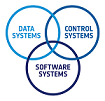Speaker
Description
Developing Flight Dynamics techniques and algorithms to ensure high level of autonomy for next generation of space missions is one of the main objectives of the flight dynamics department in CNES. One example of these autonomous techniques is the Autonomous Orbital Control (AOC) which consists of delegating to onboard satellite system the identification, planning and realization of orbital corrections allowing to stay in the mission reference orbit. For several years, ASTERIA, a concept of on-board autonomy combining station keeping and collision risk management for the low earth orbit (LEO) satellites, has been developed by CNES. ASTERIA, acronym for Autonomous Station-keeping Technology with Embedded collision RIsk Avoidance system, enables both in-track and cross-track control for different LEO missions. To ensure the accuracy and reactivity of the autonomous control, the solution developed by CNES integrates the complete management of the risk of collision. Station-keeping and avoidance maneuvers are therefore closely linked by an on-board management.
Managing the risk of collision requires the best possible knowledge of the future trajectory of the primary satellite and up-to-date information on secondary objects. Thereby a calculation process with a large amount of data and the propagation of orbital states and covariance is required. That is why, so far, the collision risk management has always been a ground segment activity. But this severely limits the autonomy on board by imposing a schedule and the knowledge of the station keeping maneuvers which are not compatible with reactivity needed by an Autonomous Orbit Control (AOC). On the contrary, management by the satellite itself offers interesting prospects for reactivity and increased autonomy, but requires carrying out a risk calculation on board and identifying the relevant risk assessments to implement effective avoidance solutions onboard.
The presentation aims to show the exhaustiveness of the ASTERIA concept.
First of all, the principles of collision risk management on board are described. Then, the study of the computational load, the accuracy of the risk estimate and the performance of risk avoidance strategies are presented. The ability to the operations of such a system is then demonstrated by introducing the associated operational management process. CNES took advantage of new on-board architecture on ESOC OPS-SAT 3-Units CubeSat demonstrator to experiment the feasibility and good reliability of its AOC. This presentation will illustrate some results of this innovative experience.
Finally, issues related to an autonomous system will be discussed, in particular those concerning the space traffic management

